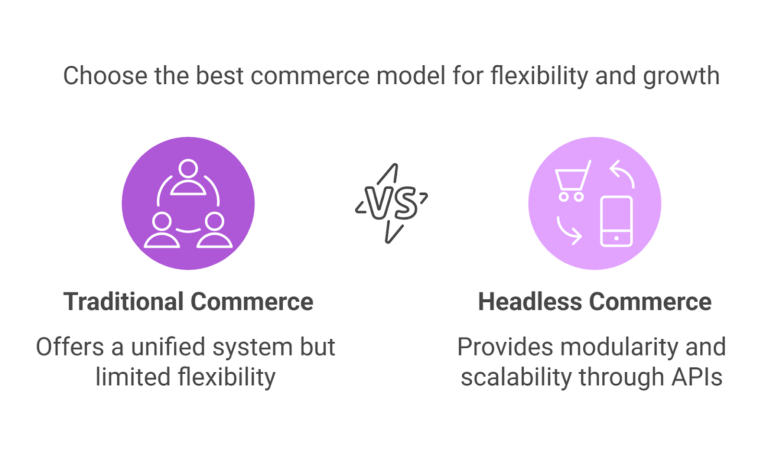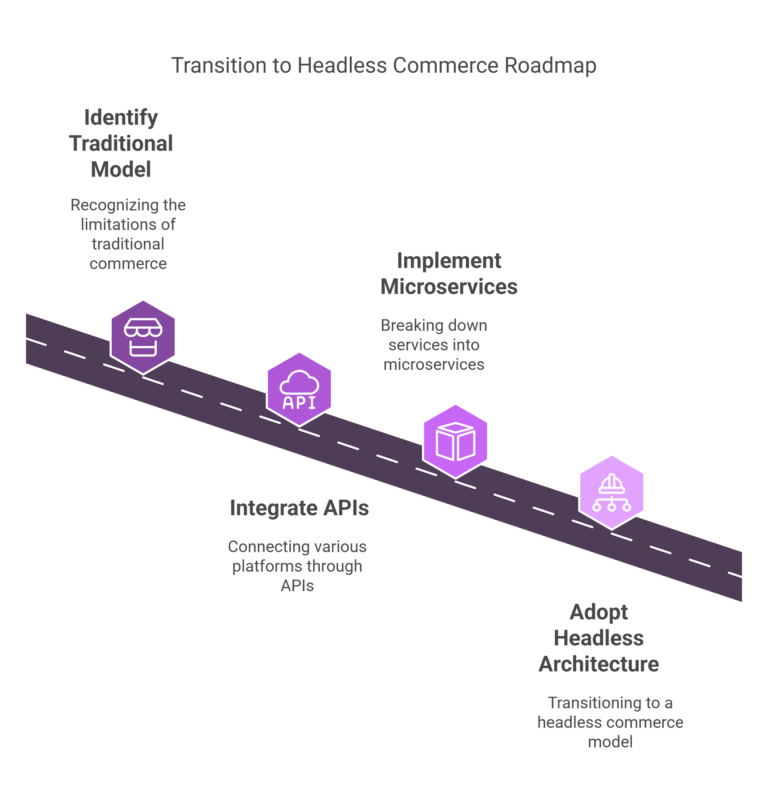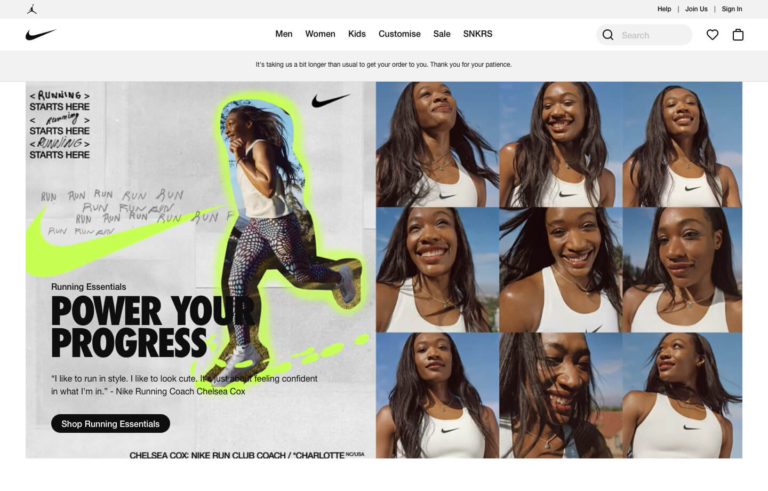Greetings! I'm Aneesh Sreedharan, CEO of 2Hats Logic Solutions. At 2Hats Logic Solutions, we are dedicated to providing technical expertise and resolving your concerns in the world of technology. Our blog page serves as a resource where we share insights and experiences, offering valuable perspectives on your queries.

Quick Summary
Headless commerce separates your customer-facing storefront from your behind-the-scenes e-commerce functionality. This approach offers greater flexibility, faster performance, and better omnichannel capabilities. However, it comes with added complexity and potential cost increases. It’s ideal for businesses that need custom experiences across multiple touchpoints and have the technical resources to support it.
At 2Hats Logic, we believe that every shift in e-commerce technology should ultimately make business more rewarding, for teams and their customers alike.
Headless commerce is more than a technical trend; it’s a chance to rethink how businesses grow, adapt, and connect with shoppers in meaningful ways. With this guide, our goal is to share practical insights and honest reflections, so your organization can make confident, informed choices about the future.
What Is Headless Commerce?
Headless commerce is an e-commerce architecture where the front end (what customers see) is completely separated from the back end (where all the business logic happens).
Think of it like having multiple storefronts in different cities, each with its own unique design and local appeal, all connected to the same central warehouse, inventory system, and fulfillment operations.
In practical terms, this means your product catalog, pricing engine, inventory management, and order processing systems operate independently from your website, mobile app, or any other customer touchpoint.
You could completely redesign your website without touching your inventory system, or launch a new mobile app that pulls from the same product database as your existing web store. Going headless means changing the head without affecting the body, and vice versa.
Traditional Commerce vs. Headless Commerce
Let’s illustrate the difference with a simple comparison:

| Feature | Traditional Commerce | Headless Commerce |
|---|---|---|
| Architecture | Monolithic system (Shopify, WooCommerce) | Decoupled front-end and back-end systems |
| Customization | Template-based with limited flexibility | Complete control over user experience and design |
| Development Speed | Faster initial setup (days to weeks) | Longer initial development (3-12 months) |
| Performance | Often 3-6 second page loads | Typically 1-2 second page loads with optimization |
| Cost Range | $500-$5,000 monthly for most businesses | $5,000-$50,000+ monthly including development and maintenance |
| Technical Team | Basic web management skills sufficient | Requires developers, DevOps, and ongoing technical support |
| Best For | Small to medium businesses with standard needs | Large businesses needing custom experiences across multiple channels |
| Implementation Timeline | 1-8 weeks typical setup | 6-18 months for full implementation |
Why Businesses Are Going Headless
Research by Deloitte and Google demonstrates that page speed improvements have measurable business impact: a 0.1-second improvement in load time can lead to a 10% increase in conversions in eCommerce. This performance advantage is a key driver behind the growing adoption of headless commerce.
Current market data shows significant momentum toward headless architectures, with 73% of businesses having already implemented headless solutions as of 2023. This shift is primarily driven by four key factors:
Here’s what makes headless commerce so attractive for growing businesses:
- Performance Requirements: Modern consumers expect sub-2-second page loads. Headless front-ends, built with technologies like React or Vue.js, can achieve this consistently.
- Omnichannel Demands: Businesses need to sell through websites, mobile apps, social commerce, marketplaces, and emerging channels like voice and AR. Headless allows one back-end system to power all these touchpoints.
- Customization Needs: When your customer experience requirements go beyond what templates can provide, headless offers unlimited flexibility.
- Future-Proofing: New sales channels emerge regularly. Headless architecture makes it easier to add new touchpoints without rebuilding core systems.
However, these benefits come with significant trade-offs in complexity, cost, and technical requirements that many businesses underestimate.
Getting Started With Headless Commerce
If you’re intrigued by the possibilities of headless commerce, here’s how to begin your journey:

- Audit your current commerce capabilities and identify specific limitations.
- Prioritize your business objectives (speed, flexibility, omnichannel, etc.).
- Research platforms that align with your needs and budget.
- Start small with a proof of concept before full implementation.
- Partner with experts who’ve successfully implemented headless solutions.
Real-World Headless Commerce Examples
Here are some examples that might resonate with your situation:
Case Study: Nike

Challenge: Nike recognized the need to optimize their mobile shopping experience as mobile traffic continued to grow, requiring a solution that could deliver fast, app-like experiences without the constraints of traditional e-commerce platforms.
Solution: Nike implemented a React single-page application (SPA) paired with a Node.js backend-for-frontend (BFF) architecture, separating their mobile experience from their desktop platform.
Implementation Details:
- Technology stack: React SPA, Node.js BFF, integrated with existing backend systems
- Focus: Mobile-first optimization with enhanced user experience design
- Approach: Gradual implementation starting with mobile touchpoints
Results:
- Significant increase in mobile conversions, helping Nike strengthen their market position against competitors like Adidas
- Enhanced website performance and loading speeds
- Greater flexibility for future mobile feature development
Key Lesson: Success came from focusing on specific user experience improvements rather than just technical architecture changes.competitive athletic apparel space and strengthen their position.
Case Study: Target

Challenge: Target discovered through market research that most of their customers begin the shopping process on one device and complete purchases on another, creating friction in the customer journey.
Solution: Target implemented headless architecture to create unified customer experiences across all devices and touchpoints.
Implementation Details:
- Gradual rollout focusing on cross-device data persistence
- Integration with existing inventory and customer management systems
- API-first approach connecting web, mobile, and in-store experiences
Results:
- Increased website conversion rates as customers found it easier to complete purchases regardless of where they started their shopping journey
- Improved customer experience consistency across devices
- Better competitive positioning against Amazon and Walmart
Key Lesson: The primary value came from solving specific customer journey problems rather than implementing technology for its own sake.
Pro Tip: When considering headless commerce, map all your current and desired customer touchpoints. This exercise reveals the value that headless can bring to your specific business model.
Common Headless Commerce Platforms
Based on our experience implementing various solutions, here are some popular platforms you might consider:
Enterprise Solutions ($10,000-$100,000+ monthly)
Salesforce Commerce Cloud
- Strengths: Enterprise features, strong B2B capabilities, extensive integrations
- Weaknesses: High complexity, expensive implementation, steep learning curve
- Typical implementation: 9-18 months, $500K-$2M+ total cost
Adobe Commerce (Magento)
- Strengths: Highly customizable, strong developer community, flexible pricing
- Weaknesses: Resource-intensive, requires significant technical expertise
- Typical implementation: 6-12 months, $200K-$1M+ total cost
Mid-Market Solutions ($1,000-$20,000 monthly)
Shopify Plus (Headless)
- Strengths: Familiar platform, good documentation, reasonable learning curve
- Weaknesses: Still somewhat limited compared to pure headless solutions
- Typical implementation: 3-6 months, $50K-$300K total cost
BigCommerce Enterprise
- Strengths: Built-in headless capabilities, good API performance, reasonable pricing
- Weaknesses: Smaller ecosystem, fewer specialized developers available
- Typical implementation: 4-8 months, $75K-$400K total cost
API-First Platforms ($500-$5,000+ monthly)
Contentful + Commerce Layer
- Strengths: True headless, excellent developer experience, flexible content management
- Weaknesses: Requires more technical setup, smaller support community
- Typical implementation: 4-10 months, $100K-$600K total cost
Saleor
- Strengths: Open source option, GraphQL API, cost-effective for custom builds
- Weaknesses: Requires internal development team, limited third-party integrations
- Typical implementation: 6-14 months, $150K-$800K total cost
Each has its strengths depending on your business size, budget, and requirements.
Is Headless Commerce Right for Your Business?
Not every business needs to go headless. When we consult with clients at 2HatsLogic, we ask them:
- Do you need to sell across multiple channels or touchpoints?
- Is your current store performance hurting conversions?
- Do you have unique user experience requirements that off-the-shelf solutions can’t handle?
If you answered “yes” to these, headless commerce might be worth exploring.
The Challenges of Going Headless
The picture is not complete if the potential hurdles are not mentioned:
- Higher initial development costs: Building custom front ends requires expertise and time.
- More complex ecosystem: You’ll be managing multiple systems instead of one.
- Technical expertise required: Your team will need developers familiar with APIs and modern front-end frameworks.
- Content management can be tricky: Without careful planning, content editors might struggle with the decoupled approach.
Pro Tip: Before going all-in on headless, consider a hybrid approach where you implement headless capabilities for specific high-value parts of your customer journey while keeping other elements on your traditional platform.
Common Failure Points and How to Avoid Them
Technical Failures (60% of failed projects)
Problem: Underestimating integration complexity
- Reality: Connecting headless front-ends to existing ERP, CRM, and inventory systems often takes 3-6 months longer than planned
- Solution: Conduct thorough API audits of all existing systems before starting development
Problem: Performance optimization neglect
- Reality: Headless isn’t automatically faster, poor implementation can be slower than traditional platforms
- Solution: Set specific performance benchmarks and test regularly throughout development
Business Process Failures (25% of failed projects)
Problem: Content management workflow disruption
- Reality: Marketing teams struggle with decoupled content systems, leading to delayed launches and frustrated staff
- Solution: Invest heavily in content team training and consider hybrid approaches for content-heavy sections
Problem: Inadequate maintenance planning
- Reality: Headless systems require ongoing developer attention that many businesses can’t sustain
- Solution: Budget for permanent technical staff or long-term agency partnerships
Resource Planning Failures (15% of failed projects)
Problem: Developer skill gaps
- Reality: Headless requires specific skills (React, API integration, DevOps) that traditional e-commerce teams often lack
- Solution: Plan for extensive training or new hires 6+ months before project start
When Headless Commerce is NOT the Right Choice
Clear Red Flags
Limited technical resources: If you don’t have dedicated developers or budget for ongoing technical support, headless will likely fail.
Simple business model: Businesses with standard product catalogs, single sales channels, and traditional customer journeys rarely see ROI from headless complexity.
Tight timelines: If you need to launch within 6 months, traditional platforms are almost always the better choice.
Budget constraints: Total cost of ownership under $200,000 over three years typically doesn’t justify headless implementation.
Specific Business Scenarios to Avoid Headless
- Small retailers with under $5M annual revenue
- Businesses with fewer than 1,000 SKUs and single-channel sales
- Organizations without dedicated IT staff
- Companies planning major business model changes within 2 years
- Seasonal businesses that can’t support year-round development costs
Better Alternatives
For most businesses, these approaches provide better value:
- Shopify Plus or BigCommerce Enterprise: For growing businesses needing more customization than basic plans
- Platform-specific apps and themes: Often provide 80% of desired functionality at 20% of headless cost
- Hybrid approaches: Keep core commerce on traditional platforms, use headless for specific high-value touchpoints
Implementation Challenges and Ongoing Requirements
Major Integration Challenges
Legacy System Integration: ERP systems often lack modern APIs, requiring 3-6 months of custom middleware development and $50,000-$200,000 in additional costs. Common issues include real-time inventory sync, pricing updates, and order processing workflows.
Data Synchronization: Customer data must flow smoothly between CRM, marketing automation, and headless systems. Poor planning leads to duplicate customer records and inconsistent personalization across touchpoints.
Security and Compliance: PCI compliance across decoupled systems requires specialized expertise and ongoing monitoring. Budget an additional $15,000-$75,000 for security implementation and regular audits.
Ongoing Maintenance Reality
Technical Requirements: Monthly security updates, performance monitoring, API maintenance, and backup procedures are more complex than traditional platforms due to multiple interconnected systems.
Staffing Needs: Minimum viable team requires 1 full-time developer and 0.5 FTE DevOps engineer. Most successful implementations need 2-3 developers, 1 DevOps engineer, and 1 project coordinator with specialized skills in React/Vue.js, API integration, and cloud platforms.
Annual Cost Breakdown: Beyond initial development, expect $95,000-$1,080,000+ annually for platform licensing, hosting, development, integrations, and compliance – costs that traditional platforms bundle into simpler pricing models.
Key Takeaway: Factor these ongoing complexities into your total cost of ownership calculations, not just the initial implementation investment.
The Future of Headless Commerce
At 2HatsLogic, we’ve observed the evolution of headless commerce from a niche technical approach to a mainstream business strategy. Based on our industry experience and market analysis, the future of headless commerce is likely to include:
- Increased adoption of composable commerce (selecting best-of-breed components)
- More no-code tools are making headless more accessible
- AI-driven personalization leveraging the flexibility of headless architectures
- Better integration with emerging sales channels like VR/AR and voice commerce
Conclusion
After helping dozens of brands transform their digital commerce experiences, we have seen firsthand how the right implementation can be a game-changer. But every business is unique, and the path to headless success depends on your specific goals and constraints.
At 2HatsLogic, we specialize in guiding businesses through the entire headless commerce journey, from initial assessment to successful implementation. Whether you’re just curious about the possibilities or ready to make the leap, we’d love to help.
Let’s chat about your headless commerce questions and explore if this approach is right for your business.
FAQ
Is headless commerce only for large enterprises?
No. While big brands like Nike and Target use it, headless is now accessible to mid-sized businesses. What matters most is your e-commerce goals, not your size.
How much does it cost to implement headless commerce?
Costs range from $20,000 to $250,000+ based on platform, complexity, and scope. At 2HatsLogic, we help tailor the investment to match your growth goals.
How long does it take to implement a headless solution?
Typically 2–6 months, depending on your current systems, product complexity, and integration needs. A phased rollout can help control both time and cost.
Can I still use my current e-commerce platform?
Most likely! Platforms like Shopify Plus, BigCommerce, and Magento support headless via APIs, allowing you to keep your backend and upgrade your frontend.
Table of contents
- What Is Headless Commerce?
- Why Businesses Are Going Headless
- Getting Started With Headless Commerce
- Real-World Headless Commerce Examples
- Common Headless Commerce Platforms
- Is Headless Commerce Right for Your Business?
- The Challenges of Going Headless
- Common Failure Points and How to Avoid Them
- When Headless Commerce is NOT the Right Choice
- Implementation Challenges and Ongoing Requirements
- The Future of Headless Commerce
- Conclusion

Related Articles







